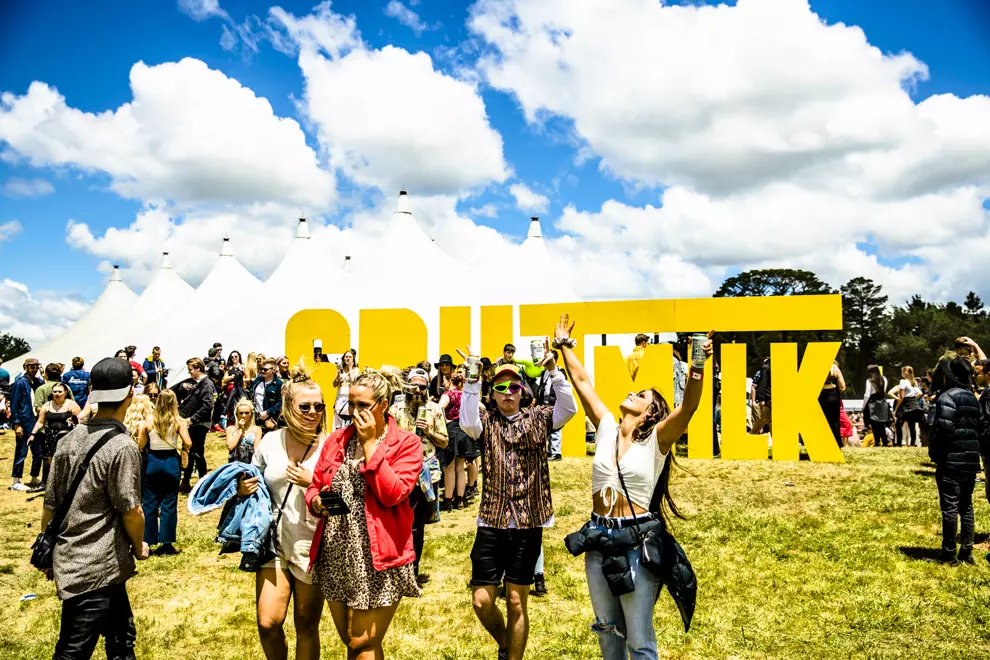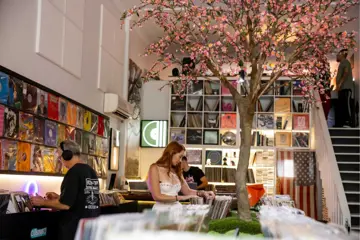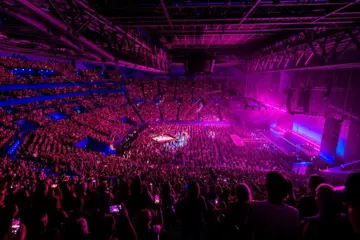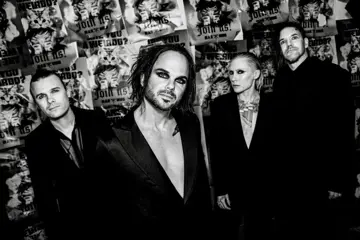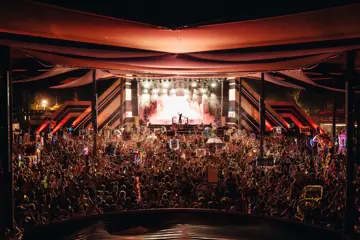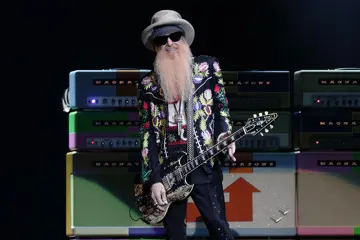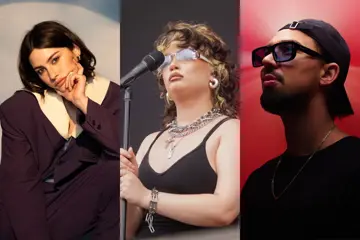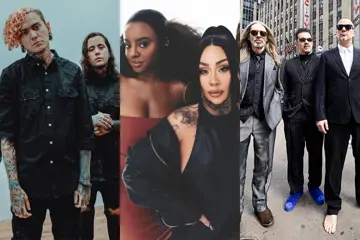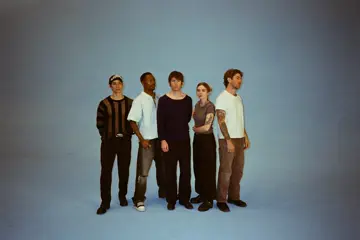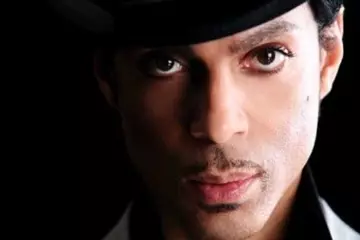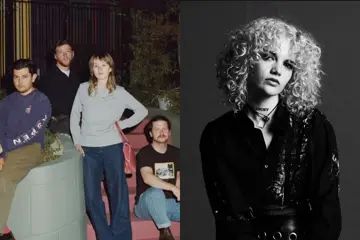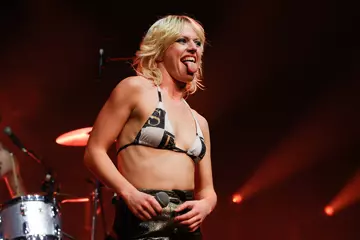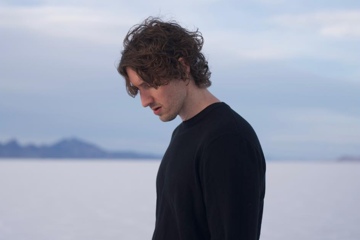 Post Malone
Post MaloneWith festival attendees undergoing behavioural changes during and after COVID, it’s become harder for promoters to beat the right groove.
Playing The Plains, Lunar Electric, Let’s Wing It and Coastal Country this year pulled the plug due to lacklustre ticket sales.
Two of Australia’s biggest festival brands with loyal followings discovered how the escalating cost of living had kicked in.
Bluesfest in Byron Bay, which usually draws 100,000 punters, posted 62,463 this autumn.
This weekend’s Splendour In The Grass (Friday 21 to Sunday 23) didn’t repeat its 2020 achievement of selling out 50,000 tix in an hour, and admitted sales were down about 30% to 35,000.
“I think it’s a reflection of the current economy,” co-promoter Jessica Ducrou told the ABC.
But Splendour owner Secret Sounds Group is slamming with Spilt Milk (November 25 to December 3).
Under Kicks Entertainment which founded it in 2016 in Canberra (Secret Sounds and Live Nation came in last year), Spilt Music branded itself as fastest selling music festival in Australia.
Last year tix for Canberra (47,000), Ballarat (32,000) and the Gold Coast (official figures unknown) disappeared in less than a week.
This year’s Spilt Music is its largest so far, adding Perth to the schedule and staging at Claremont Showground, which generally draws 35,000 for festivals.
With Post Malone and Dom Dolla heading a solid bill, pre-sales sold out in hours, and organisers had to hastily stagger ticket sales times to avoid possible server crashes.
Don't miss a beat with our FREE daily newsletter
By yesterday (July 19), the Ballarat show at Victoria Park had sold out, and organisers asserted that it was “the largest ever on-sale in the history of Moshtix.
They added, “With the Gold Coast event also nearing sell-out and record sales in Canberra and Perth, Spilt Milk further cements itself as the most in-demand ticket of the Australian summer.”
Other festivals are reporting quicker-than-usual sell-outs.
Tasmania’s “sinister spirit” Dark Mofo (June 8 to 22) broke the record for its first sales.
There were 12,000 waiting in the online queue at midday when tickets went on sale, and by 4 pm, shifted over 38,000 tix worth $3.1 million, with 62% bought outside South Australia.
In its 10th year, Fuzzy’s multi-city EMD/ hip hop Listen Out in September had its biggest first-day ticket sales — “an incredible achievement, particularly considering everything Australian live music is up against at the moment,” organisers said.
The 30-act run over six cities is expecting to draw a total of 200,000 patrons.
The Adelaide Beer & BBQ Festival (July 14—16) drew over 21,000 carnivores, for whom 100,000 beers were poured and raised $10,000 for the Adelaide Reclink Community Cup.
Live music crashed out from five stages from The Living End, Dune Rats, Dave Gleeson, Bennies, Katy Steele, DJ Dexter and Magic Dirt.
The 10th Birdsville Big Red Bash (July) in the remote outback lifted numbers to 11,000 when headliner Icehouse took to the stage, with other music from Hoodoo Gurus, Human Nature, Pete Murray, Dragon, John Williamson, Chocolate Starfish, The Chantoozies, Ross Wilson, Shane Howard, Kate Ceberano and The Angels.
A report released in late June revealed how the Adelaide Fringe (February 17 to March 19) became the first Australian festival to break 1 million tickets.
The Fringe – which included music from Electric Dreams, Marcia Hines, The 27 Club, DJ, Hot Dub Time Machine and Louise Blackwell – generated $105.5 million in expenditure for South Australia – a 40% increase in 2022.
Similarly, a new impact report by Hawkridge Entertainment Services in June forecasts that the Sydney Fringe in September could repeat its achievements from 2022.
These included injecting $36 million to NSW, a box office of $2 million and a crowd of 75,000.
Adelaide Cabaret Festival 2023 (June 9 to 24) pulled more than 50,000 – almost 10,000 more than last year but far from the record 80,000 of 2010 – with 30 sold-out shows over 12 days.
Sassy To The Max
Why some of these gatherings of the tribes get sassy to the max goes back to why people attend them in the first place.
A study by promoter and venue owner Live Nation called The Power Of Live: Global Live Music Fan Study For Brands found that 76% of Australian millennials and Gen Zers think that live experiences give them the most life.
One of their most memorable experiences was a live music event for 62%.
Only 1% of Aussies rated sex over the live experience in giving them a thrill. In comparison, 10% of global respondents were hornier.
Only 64.2% of UK festival attendees go for just the music – a figure probably similar for Aussies.
There are the immersive experiences, social interaction, relating one’s personal identity to the festival’s brand, the heightened sense of hedonism as listening to favourite music releases more dopamine, the ‘feel good’ chemical, and the rite of passage.
“Music festivals allow attendees to escape from the day-to-day grind,” related Positive Psychology.
“Surrounding yourself with new people and enjoying the revelry is entertaining and relaxing.
“For hours at a stretch or even days, you’re able to pretend you’re someone else – someone without a care in the world.”
The 32 million people who go to festivals a year (according to online ticketing platform Eventbrite) have their own take on brands.
There’s love, peace, healing and Mother Earth. Radical self-reliance and futuristic landscapes. Daylo and playful boho. Anger against repression. Middle-aged Crikey readers. Laid-back family values. Inclusivity of all kinds. Cowboys. Beats and sound system culture. ‘90s retros and crystal healers. Total escapism in everything from forests to desert dunes.
Tapped On The Risk
So if you look at why Dark Mofo struck so hard, it is because organisers tapped on the risk-taking and forward-thinking of its attendees, with some of its antics deliberately tweaking the noses of the conservative right-wing or the police.
But outgoing Creative Director Leigh Carmichael also noted the winter solstice timing of the festival was important.
“It’s something really special about that time when we are turning from the longest nights back towards the light,” he said, adding how
“It brings people together to huddle around fires, talk, eat, and celebrate.”
It explained why over 40,000 attended Mofo’s Winter Feast, 25,000 through the neon-lit entryway at Dark Park at Macquarie Point, 17,500 participated in the Ogoh-Ogoh Procession and The Burning, 15,000 to the Night Mass: Exstasia and 2,000 braved the freezing surf for the nude run.
Listen Out’s appeal continued not only for supporting new talent but curating a bill that was “informed by actual equality and diversity.”
Just before Icehouse went into “Great Southern Land” at Big Red Bash, Iva Davies said, “Who knew you could have so much fun in the desert? If ever a song was made for out here, it’s this one.”
Obviously, Big Red’s tag as “the world’s most desolate festival” helps people totally recreate themselves there.
But as founder Greg Donovan of Outback Music Festival Group suggests, “It’s absolute camaraderie; the audiences are so totally engaged.
“They come with the pure intention of having fun with new-found friends, and the non-music activities we plan for them fit right into that.
“They’re fans of the festival, and it’s spread by word of mouth.”
Among the events were the breaking of world records – largest Nutbush City Limits Dance (5,838 revellers), Most People Practicing Yoga on a Red Sand Dune (672) and Largest Human Image Of A Country (in this case Australia, with 5,467 punters, kitted in blue from top to toe) raising $74,897.90 for type 1 diabetes research.
The Priscilla - Queen of the Desert-themed running races raised over $25,000 for The Royal Flying Doctor Service, while 840 participants and spectators participated in the RFDS Bashville Drags race and Fashions in the Desert.

